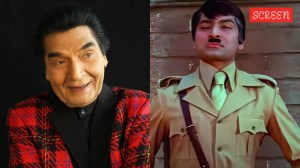Limits of freedom
The American diplomat Richard Holbrooke pondered a problem on the eve of the September 1996 elections in Bosnia, which were meant to restore...

The American diplomat Richard Holbrooke pondered a problem on the eve of the September 1996 elections in Bosnia, which were meant to restore civic life to that ravaged country. “Suppose the election was declared free and fair,” he said, and those elected are “racists, fascists, separatists, who are publicly opposed to (peace and reintegration). That is the dilemma.” Indeed it is, not just in the former Yugoslavia, but increasingly around the world. Democratically elected regimes, often ones that have been reelected or reaffirmed through referenda, are routinely ignoring constitutional limits on their power and depriving their citizens of basic rights and freedoms. From Peru to the Palestinian Authority, from Sierra Leone to Slovakia, from Pakistan to the Philippines, we see the rise of a disturbing phenomenon in international life — illiberal democracy.
It has been difficult to recognise this problem because for almost a century in the West, democracy has meant liberal democracy — a political systemmarked not only by free and fair elections, but also by the rule of law, a separation of powers, and the protection of basic liberties of speech, assembly, religion, and property. In fact, this latter bundle of freedoms — what might be termed constitutional liberalism — is theoretically different and historically distinct from democracy. As the political scientist Philippe Schmitter has pointed out, “Liberalism, either as a conception of political liberty, or as a doctrine about economic policy, may have coincided with the rise of democracy. But it has never been immutably or unambiguously linked to its practice.” Today the two strands of liberal democracy, interwoven in the Western political fabric, are coming apart in the rest of the world. Democracy is flourishing; constitutional liberalism is not.
Today, 118 of the world’s 193 countries are democratic, encompassing a majority of its people (54.8 percent, to be exact), a vast increase from even a decade ago. In this season of victory, one might haveexpected Western statesmen and intellectuals to go one further than E.M. Forster and give a rousing three cheers for democracy. Instead there is a growing unease at the rapid spread of multi-party elections across south-central Europe, Asia, Africa, and Latin America, perhaps because of what happens after the elections. Popular leaders like Russia’s Boris Yeltsin and Argentina’s Carlos Menem bypass their parliaments by presidential decree, eroding basic constitutional practices. The Iranian parliament — elected more freely than most in the Middle East — imposes harsh restrictions on speech, assembly, and even dress, diminishing that country’s already meager supply of liberty. Ethiopia’s elected government turns its security forces on journalists and political opponents, doing permanent damage to human rights (as well as human beings).
Naturally there is a spectrum of illiberal democracy, ranging from modest offenders like Argentina to near-tyrannies like Kazakstan and Belarus, with countries like Romaniaand Bangladesh in between. Along much of the spectrum, elections are rarely as free and fair as in the West today, but they do reflect the reality of popular participation in politics and support for those elected. And the examples are not isolated or atypical. Freedom House’s 1996-97 survey, Freedom in the World, has separate rankings for political liberties and civil liberties, which correspond roughly with democracy and constitutional liberalism, respectively. Of the countries that lie between confirmed dictatorship and consolidated democracy, 50 percent do better on political liberties than on civil ones. In other works, half of the “democratising” countries in the world today are illiberal democracies.
Illiberal democracy is a growth industry. Seven years ago only 22 percent of democratising countries could have been so categorized; five years ago that figure had risen to 35 percent. And to date few illiberal democracies have matured into liberal democracies; if anything, they are moving towardheightened illiberalism. Far from being a temporary or transitional stage, it appears that many countries are settling into a form of government that mixes a substantial degree of democracy with a substantial degree of illiberalism. Just as nations across the world have become comfortable with many variations of capitalism, they would well adopt and sustain varied forms of democracy. Western liberal democracy might prove to be not the final destination on the democratic road, but just one of many possible exits.
The tension between constitutional liberalism and democracy centres on the scope of governmental authority. Constitutional liberalism is about the limitation of powers, democracy about its accumulation and use. For its reason, many eighteenth and nineteenth century liberals saw in democracy a force that could undermine liberty. The tendency for a democratic government to believe it has absolute sovereignty (that is, power) can result in the centralisation of authority, often by extraconstitutionalmeans and with grim results. Over the last decade, elected governments claiming to represent the people have steadily encroached on the powers and rights of other elements in society, a usurpation that is both horizontal (from other branches of the national government) and vertical (from regional and local authorities as well as private business and other nongovernmental groups).Horizontal usurpation, usually by presidents, is more obvious, but vertical usurpation is more common. Over the last three decades, the Indian government has routinely disbanded state legislatures on flimsy grounds, placing regions under New Delhi’s direct rule. Usurpation is particularly widespread in Latin America and the states of the former Soviet Union, perhaps because both regions mostly have presidencies. These systems tend to produce strong leaders who believe that they speak for the people — even when they have been elected by no more than a plurality. Presidents appoint cabinets of cronies, rather than senior partyfigures, maintaining few internal checks on their power. And when their views conflict with those of the legislature, or even the courts, presidents tend to “go to the nation,” bypassing the dreary tasks of bargaining and coalition-building. While scholars debate the merits of presidential versus parliamentary forms of government, usurpation can occur under either, absent well-developed alternate centres of power such as strong legislatures, courts, political parties, regional governments, and independent universities and media.





- 01
- 02
- 03
- 04
- 05

























